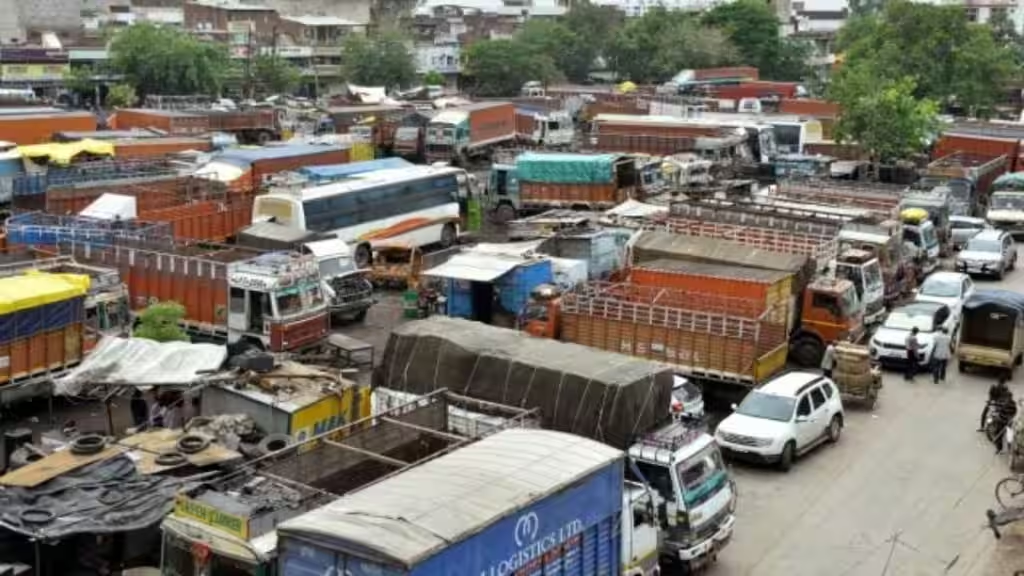The debate over India’s logistics costs
01 Jan 2024
Opinion: Poonam Munjal and Sanjib Pohit.
The number recently put forth by a government-constituted task force represents, at best, an interim assessment till the final report is out.
The National Council of Applied Economic Research (NCAER) released a report on “Logistics Cost in India Assessment and Long-term Framework” on December 14, 2023. The report is an outcome of a consultative approach adopted by a task force constituted by department for promotion of industry and internal trade (DPIIT) in April 2023. The members of the task force included representatives from the Asian Development Bank, NITI Aayog, ministry of statistics and programme implementation (MoSPI), academia (Asia Pacific School of Logistics & Graduate School of Logistics, Inha University of Korea), logistics industry stakeholders (Indian National Shipowners Association, National Industrial Corridor Development Corporation, Aviapro Logistic Services, All-India Transporters’ Welfare Association, Warehousing Association of India), logistics division of the DPIIT, and NCAER.
The task force was set up with the purpose of arriving at an estimate of the logistics cost incurred by India, which can be relied upon and which is based on the available facts and takes into account industry’s experiences. The NCAER’s 2023 report attempts to achieve this goal. The hitherto available estimates included NCAER’s 8.9% of GDP for 2017-18; CII’s 10.9% of GDP in 2015; and Armstrong and Associates’ 13.0% of GDP in 2016. The A&A estimate is also the most widely circulated number, and became the basis of the National Logistics Policy’s agenda to reduce the logistics cost to global benchmarks by 2030.
But, the NCAER’s new study found that the logistics cost as a percentage of GDP has been a single-digit number since at least 2011-12. That is good news, but does this mean that India already meets the global benchmarks?
While the logistics costs, most commonly expressed as a percentage to GDP, have been estimated for some countries, there is uniformity neither in the methodology of estimation nor on definition of logistics. This means that the constituents of logistics cost can vary across different studies. Most commonly included constituents are transportation, warehousing including cost of carrying inventories, insurance, and administrative cost (the sub-constituents of which can also vary).
This study estimates the cost of most significant constituents of logistics, that is, transportation and warehousing including cost of carrying inventories, using the data published by the government—Supply and Use Tables (SUT) and National Accounts Statistics (NAS). It imputes the cost of the remaining constituents by referring to the NCAER 2017-18 study and assuming that the contribution of the remaining constituents to total cost continues to be the same as it did in 2017-18. Therefore, the study does consider all the constituents of the logistics cost, commonly covered in other countries, through direct or indirect sources.
A quick exercise comparing the transportation and warehousing costs of India with that of the US, using the two countries’ similar sources—that is SUTs—finds that while these constituents were about 6% of GDP for India, the same were just about 3% of GDP for the US, in 2015. With remaining and less prominent constituents added, total cost is less likely to exceed 8-9% for India and 5-6% for US. In contrast, A&A estimated India’s logistics cost to be 13% of GDP and the US’s cost at 8.2% in 2016. These estimates, therefore, appear to be on a higher side across the countries.
Also, the metric of expressing the logistics cost, as a percentage to GDP, is not really an ideal metric. A services-driven economy is expected to have lower logistics cost. Also, an economy dependent predominantly on road transport is expected to have, ceteris paribus, higher logistics cost. Ideally, if the countries strive to reduce their logistics cost, effort should be made towards gradually reducing the absolute cost as a percentage of sales of goods, that is, agriculture and manufactured goods. This can most commonly be achieved, among other ways, through infrastructural development, removal of congestion points, modal shift towards rail and waterway, and reduction in administrative costs. Among these, modal shift towards rail and waterway is very critical not only for reducing logistics cost but also for reducing the carbon footprint.
This task force unanimously concluded that the most appropriate way to estimate logistics costs would be through a comprehensive study, comprising a primary survey and the compilation of relevant secondary data, along with the use of real-time Big Data (e.g., e-way bill data on freight transport costs, FASTag data on the movement of consignments along their routes) to identify bottlenecks (in terms of time and cost). The findings of this comprehensive study should provide (i) a plausible estimate of total logistics costs in India, and (ii) disaggregated information on logistic costs associated with various product groups and supply chains, and across different locations within India. Such disaggregated information would enable policymakers to identify priority areas for reducing logistics costs.
Pending the completion of such a comprehensive study, the 2023 report presented an interim assessment using readily available government data to arrive at a reliable aggregate estimate of India’s logistics costs. This estimate should best be used as a baseline estimate so that the progress of interventions made under the National Logistics Policy can be appropriately tracked.
Munjal and Pohit are the Professors at NCAER, New Delhi. Views are personal.
Published in: Financial Express, 01 Jan 2024






